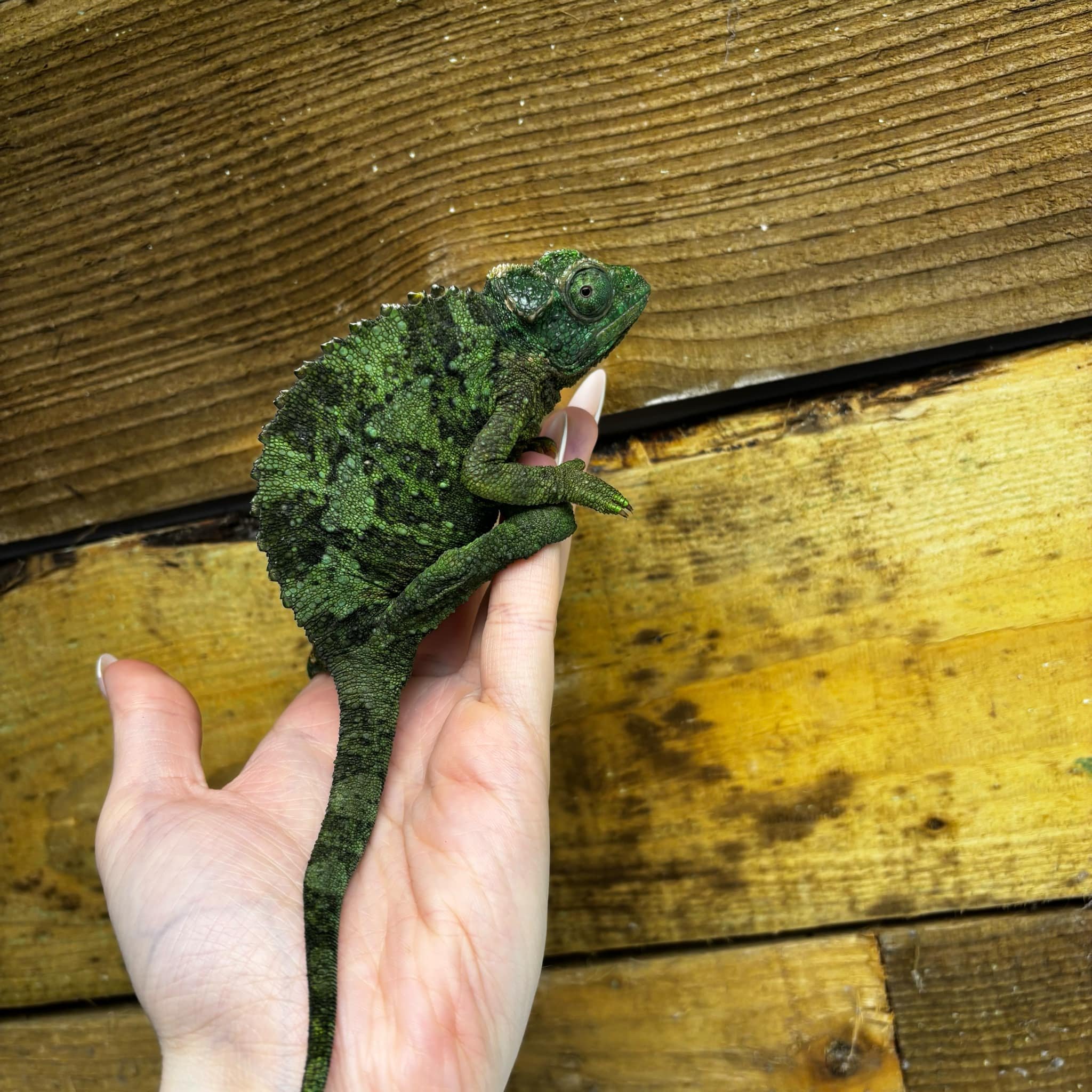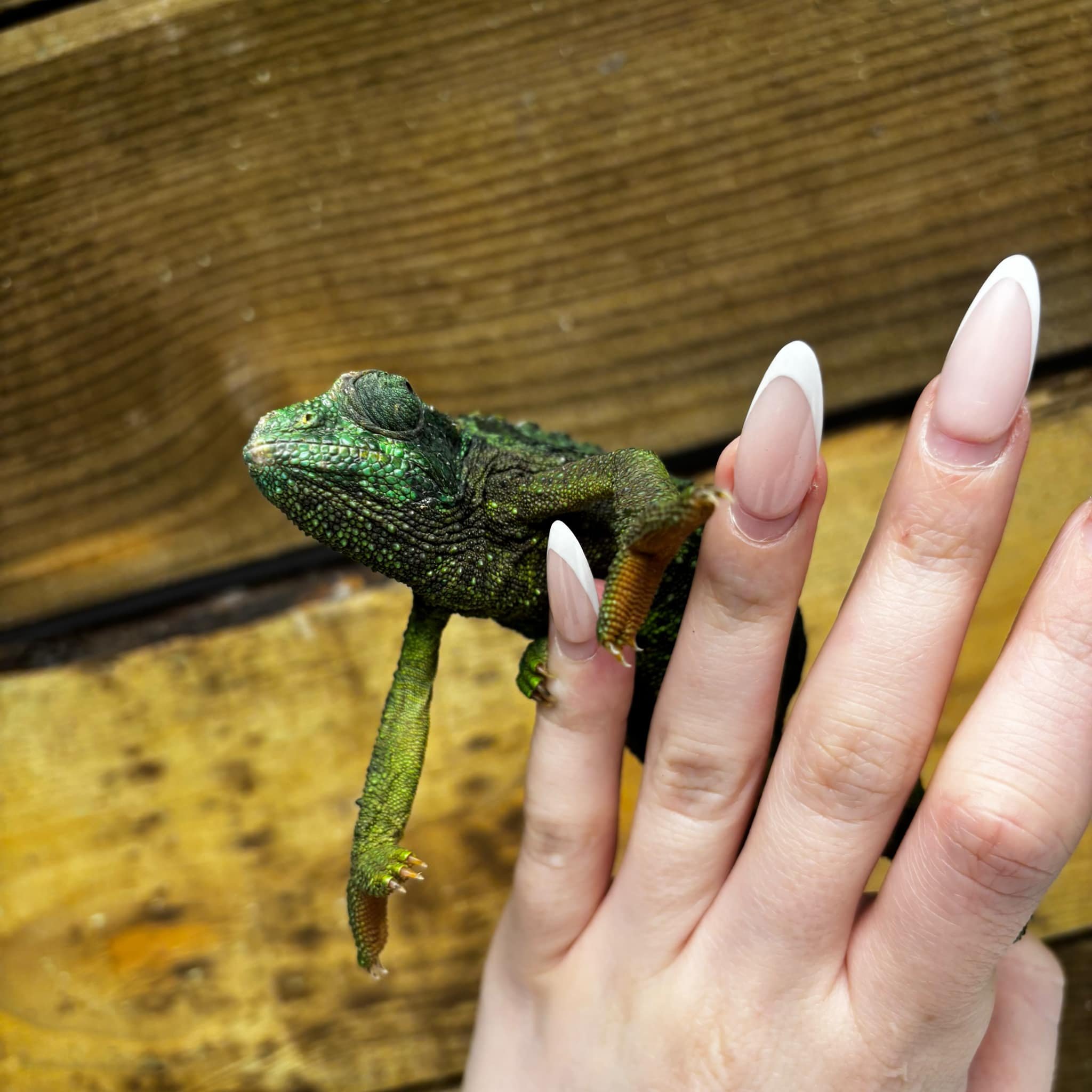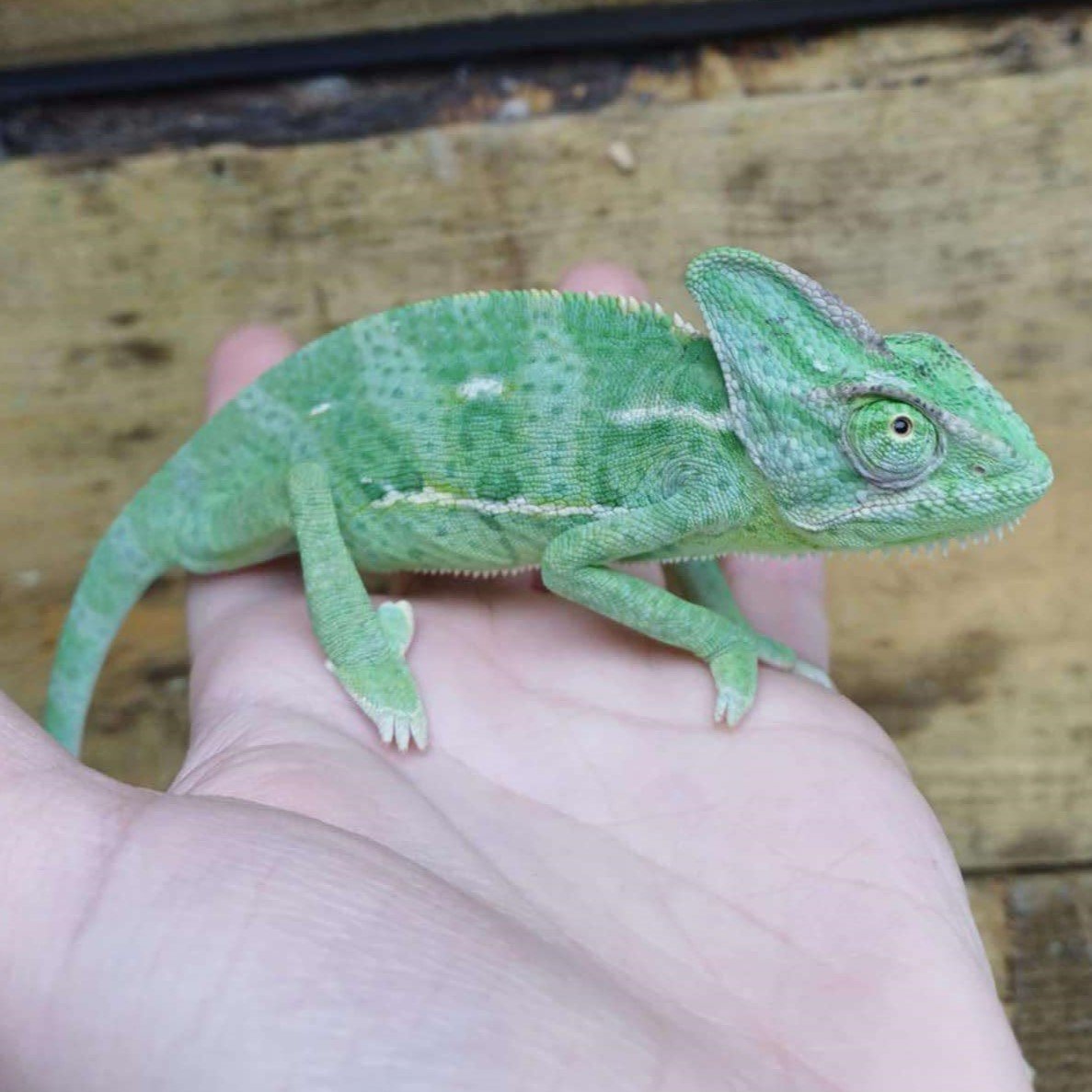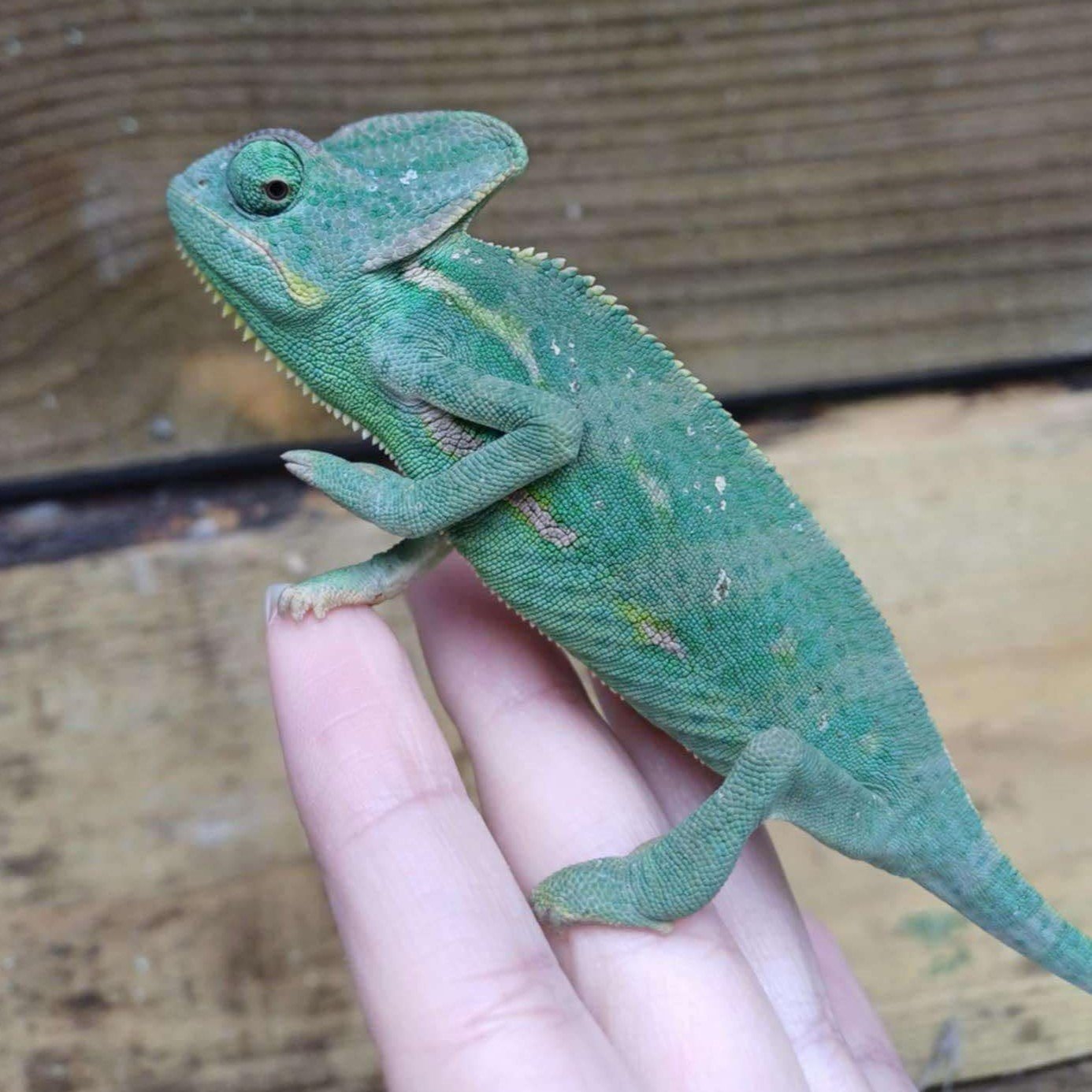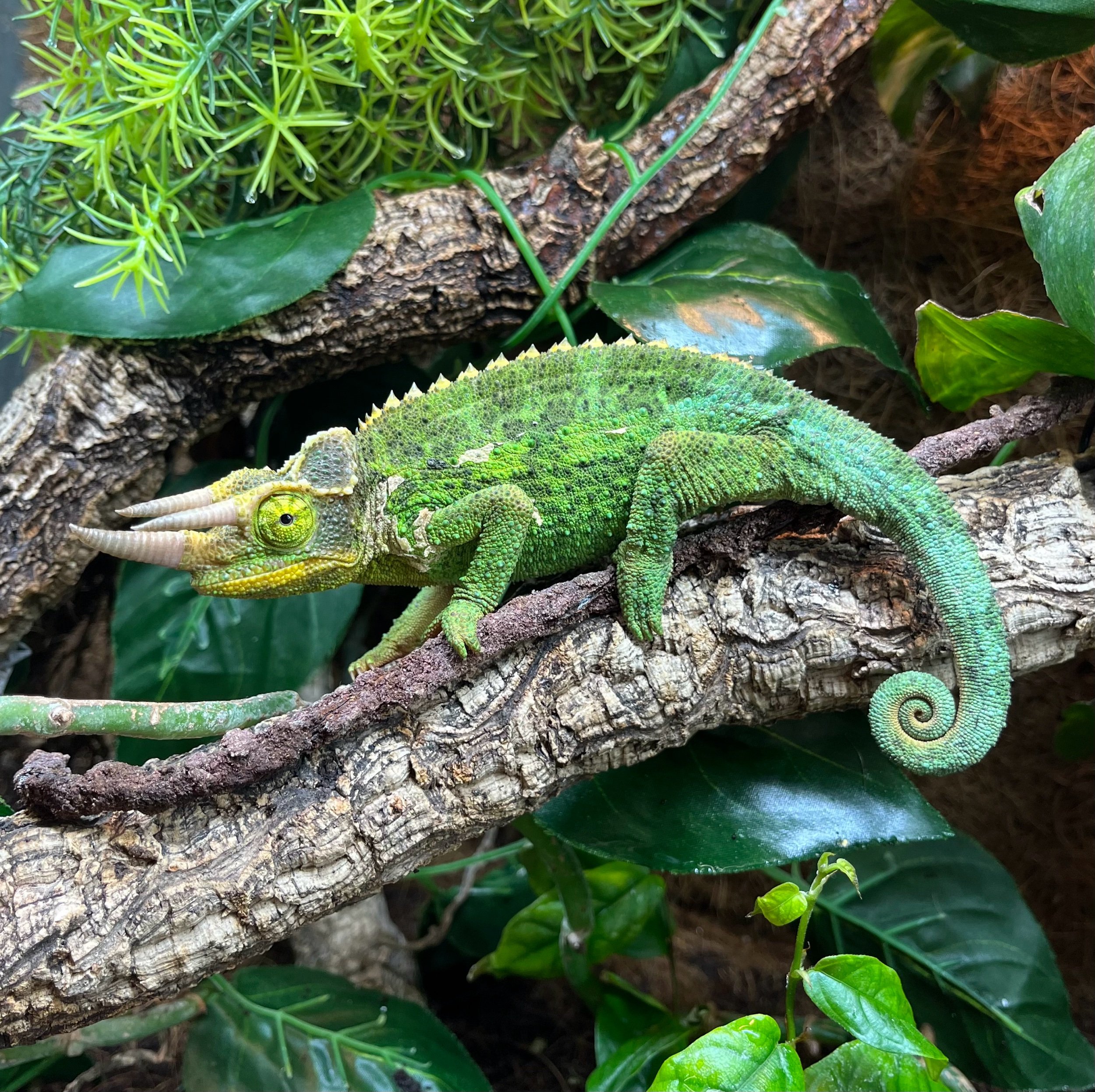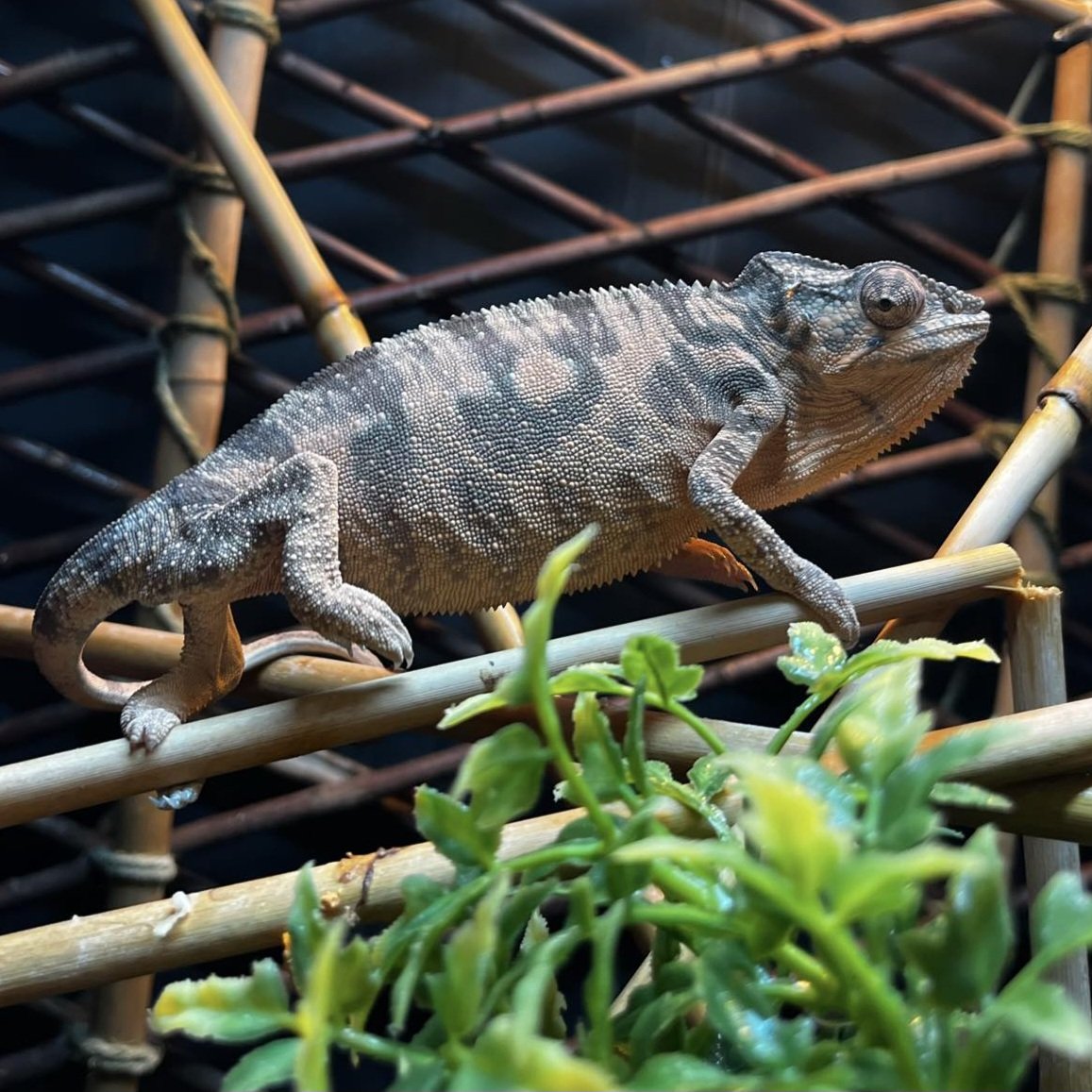Jackson's Chameleons For Sale - Adult Female Xantholophus
Yellow-crested Jackson’s Chameleons, also know as Three-horned Chameleons (T. j. xantholophus), are an iconic chameleon species known for the male’s impressive horns, their docile nature and the female’s ability to give birth to live young!
This is a great opportunity to work with this species in order to produce more in captivity!
Photos taken February 2025
For sale in our Bracknell reptile shop
LTC- to add fresh bloodlines to a breeding project
Age: Adult, exact age unknown
Sex: Female
This female has been housed with a male in the past so there is a chance she could be gravid. Her new owner should be prepared for the possibility that she will give birth to babies which will need to be housed in a separate enclosure.
Handling: Will tolerate infrequent handling on their own terms once they are used to their new home
Suitability: Well-researched experienced keepers are preferred
Diet: Insects dusted with the correct calcium and vitamin supplements
Natural Habitat: Woodlands and forests of Kenya
Enclosure recommendations
This species is best kept in large mesh enclosures, with thermostatically controlled overhead heating and UV lighting. Temperature and humidity should be measured with a digital thermo-hygrometer.
They are highly arboreal so require lots of climbing opportunities in the form of branches, cork flats, vines and live/artificial plants.
An automatic misting system and a dripper is highly recommended to maintain correct humidity levels and provide the opportunity to drink from moving water droplets.
Yellow-crested Jackson’s Chameleons, also know as Three-horned Chameleons (T. j. xantholophus), are an iconic chameleon species known for the male’s impressive horns, their docile nature and the female’s ability to give birth to live young!
This is a great opportunity to work with this species in order to produce more in captivity!
Photos taken February 2025
For sale in our Bracknell reptile shop
LTC- to add fresh bloodlines to a breeding project
Age: Adult, exact age unknown
Sex: Female
This female has been housed with a male in the past so there is a chance she could be gravid. Her new owner should be prepared for the possibility that she will give birth to babies which will need to be housed in a separate enclosure.
Handling: Will tolerate infrequent handling on their own terms once they are used to their new home
Suitability: Well-researched experienced keepers are preferred
Diet: Insects dusted with the correct calcium and vitamin supplements
Natural Habitat: Woodlands and forests of Kenya
Enclosure recommendations
This species is best kept in large mesh enclosures, with thermostatically controlled overhead heating and UV lighting. Temperature and humidity should be measured with a digital thermo-hygrometer.
They are highly arboreal so require lots of climbing opportunities in the form of branches, cork flats, vines and live/artificial plants.
An automatic misting system and a dripper is highly recommended to maintain correct humidity levels and provide the opportunity to drink from moving water droplets.
Yellow-crested Jackson’s Chameleons, also know as Three-horned Chameleons (T. j. xantholophus), are an iconic chameleon species known for the male’s impressive horns, their docile nature and the female’s ability to give birth to live young!
This is a great opportunity to work with this species in order to produce more in captivity!
Photos taken February 2025
For sale in our Bracknell reptile shop
LTC- to add fresh bloodlines to a breeding project
Age: Adult, exact age unknown
Sex: Female
This female has been housed with a male in the past so there is a chance she could be gravid. Her new owner should be prepared for the possibility that she will give birth to babies which will need to be housed in a separate enclosure.
Handling: Will tolerate infrequent handling on their own terms once they are used to their new home
Suitability: Well-researched experienced keepers are preferred
Diet: Insects dusted with the correct calcium and vitamin supplements
Natural Habitat: Woodlands and forests of Kenya
Enclosure recommendations
This species is best kept in large mesh enclosures, with thermostatically controlled overhead heating and UV lighting. Temperature and humidity should be measured with a digital thermo-hygrometer.
They are highly arboreal so require lots of climbing opportunities in the form of branches, cork flats, vines and live/artificial plants.
An automatic misting system and a dripper is highly recommended to maintain correct humidity levels and provide the opportunity to drink from moving water droplets.


